Creating Calm in Neuro-inclusive Classrooms
Your Guide to Designated Quiet Zones
Good morning, Inclusion Champions!
Welcome to this week's newsletter! We're continuing our exploration of Adaptive Learning Spaces, with a deep dive into the creation and effective use of Designated Quiet Zones in your mainstream classrooms. In this newsletter, we discuss the benefits of quiet zones, planning and design considerations, guidelines and procedures for implementation, and practical activities and resources you can use. You will find valuable insights and immediately applicable strategies within these pages to further enhance your neuro-inclusive classroom practices.
Here's a quick look back at what we've covered this week:
Monday's Blog: We introduced the concept of Designated Quiet Zones, exploring their numerous benefits for students.
Tuesday's Social Media: We highlighted the key advantages of these spaces, such as reduced sensory overload and improved self-regulation.
Wednesday's Social Media: Our focus shifted to the essential elements of planning and designing effective quiet zones, including location, sensory considerations, layout, seating and the concept of sensory diets.
Thursday's Social Media: We discussed crucial guidelines and procedures for quiet zones, covering introduction strategies, rule-setting, the use of "I need a break" cards, and thoughtful approaches to consequences.
Friday's Social Media: We shared a valuable resource – an emotional regulation wheel – offering children practical activities and strategies to manage their feelings within the quiet zone.
Saturday's Research Breakdown: We investigated research into “Classroom Calming Corners: Peaceful Spaces for Times of Transition”. And we looked at what resources are available for schools to integrate designated quiet zones into classrooms at Designing “Sensory Spaces in Schools”.
All of the posts from Tuesday - Friday are available on our social media platforms:
There is a lot of information in this newsletter with loads of resources for you to use. Apologies in advance for the length of the newsletter, I hope you will find it both helpful and empowering.
Key Takeaways and Why Quiet Zones Matter:
At the heart of neuro-inclusive education lies the understanding that all students benefit from learning environments that cater to a range of needs. Designated quiet zones are a powerful tool in achieving this. These aren't just spaces for neurodivergent students; they offer a sanctuary for any child who needs a moment to regulate their emotions, escape sensory overload, refocus their attention, or simply feel a greater sense of calm and security.
As we explored in our blog, evidence suggests that quiet zones can lead to significant improvements in students' ability to self-regulate, manage stress, and ultimately engage more effectively with learning. By involving students in the naming and rule-setting process, we empower them and foster a sense of ownership over these valuable spaces.
Remember, the designated quiet zone is not for punishment. It is a “time in” rather than a “time out”.
Featured Resources for Your Classroom:
To help you bring the benefits of designated quiet zones to your classroom, here are some key resources:
The Designated Quiet Zone Checklist:
Throughout the week's content, we've touched upon numerous elements to consider when establishing a quiet zone. Use these points to create your own checklist for planning, designing, and evaluating your classroom's calm space. To help get you started, I’ve created a FREE checklist for you to use.
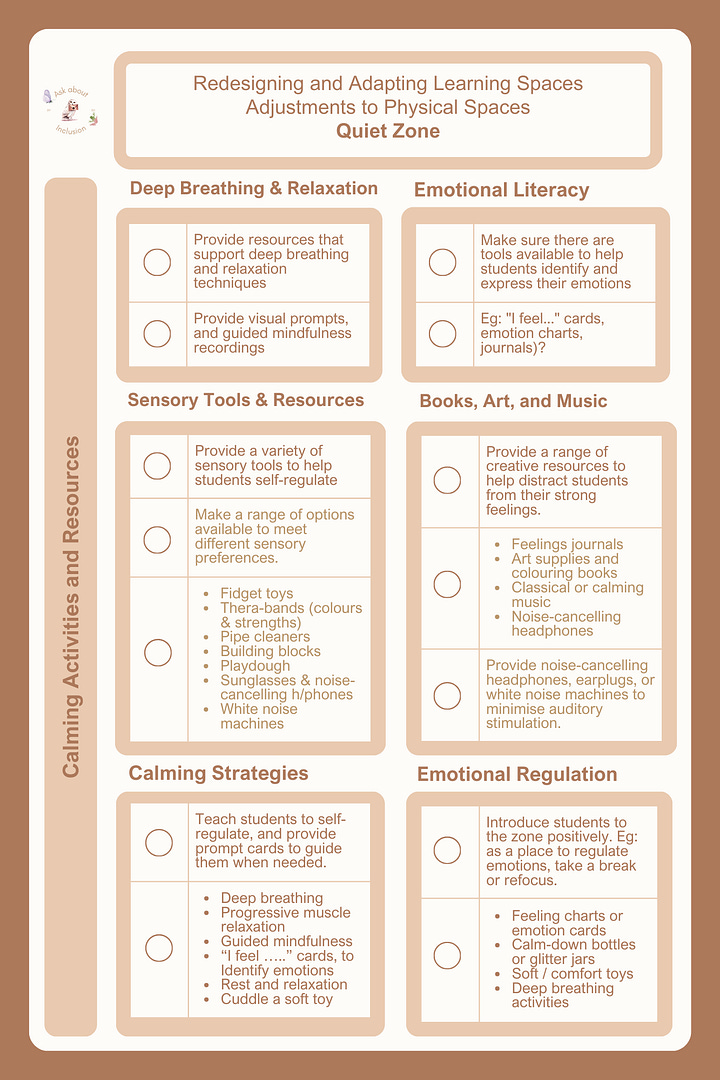

Name your designated quiet zone:
Give careful thought to the name you give to the designated quiet zone. It should be something that evokes positive feelings and encourages students to use the space when they need it. Perhaps call it something more inviting like the “Happy Hideaway” (if it is away from the bustle of the classroom), “Nature Nook” (if it incorporates natural elements), “Cloud Corner” (if it has soft, fluffy cushions) or, best of all, let your students help you choose the name!
Establish clear rules and procedures:
Involve your students in creating the rules to foster ownership and understanding. Keep the rules simple, clear and positively phrased where possible. Display the rules visually in or near the quiet zone. Sample rules (to adapt and discuss with your students):
You need a pass to enter the [designated quiet zone].
Remember, the [designated quiet zone] is for finding calm and getting ready to learn.
Don’t use the DQZ to avoid asking for help.
No yelling or throwing in this space.
Only one person at a time in the [designated quiet zone].
Use the emotional wheel to choose a calming strategy when you are here, for example: listing to calming music, do some deep breathing exercises.
Take care of the materials in the [designated quiet zone], use them appropriately (for example: use headphones when listening to music, read quietly) and put them back before you leave.
Respect your classmates by not disturbing them or asking why they are here.
Respect each other's privacy in this space. What happens in the [designated quiet zone], stays here (unless someone is unsafe).
Remember this is a short break to help you feel better, not to avoid lessons.
Respect the time limit [if you decide to implement one].
Resources and Activities for the Designated Quiet Zone
Students must have an agreed way of going to the designated quiet zone. Having a “pass” is a visual signal to the teacher that they need a time in. The teacher can set the time limit on a case-by-case basis.
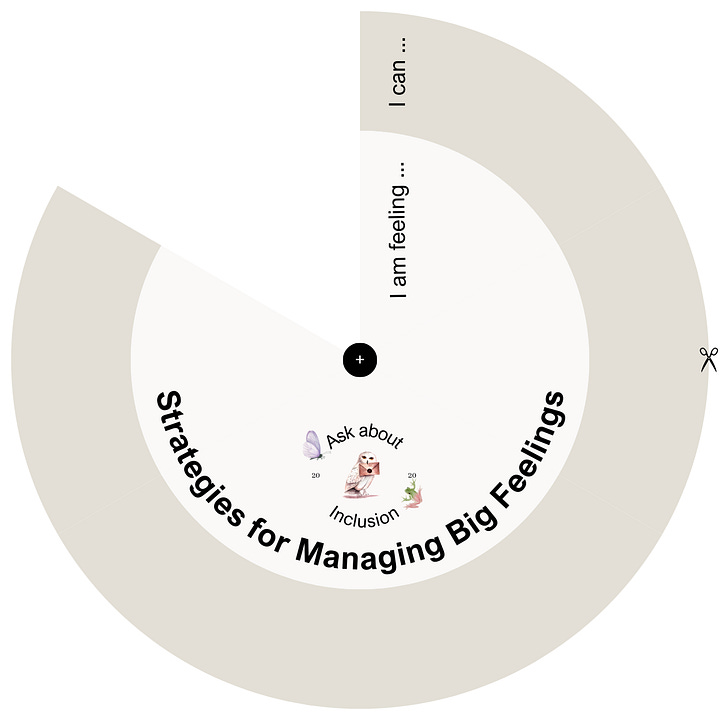
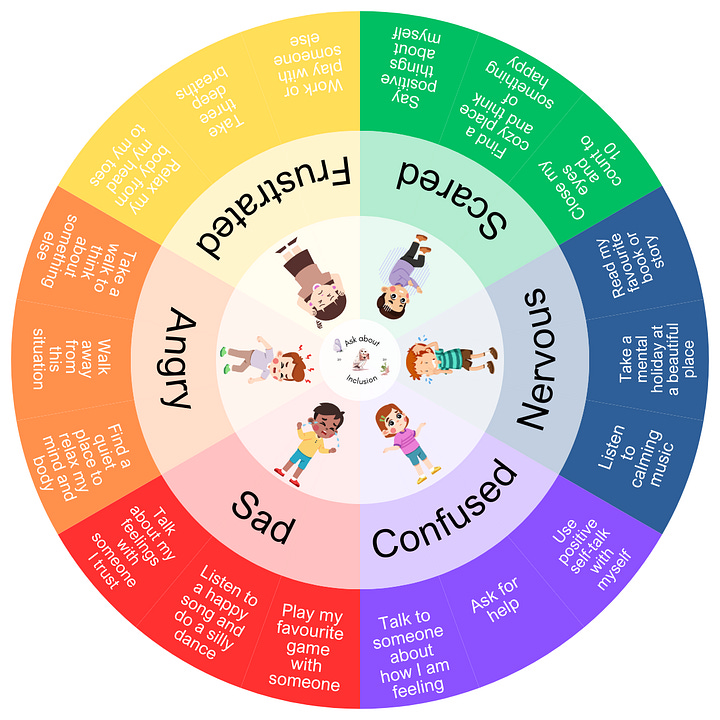
The Emotion Wheel helps students identify and name their feelings. It also guides them to activities to help them de-escalated big feelings. Please be aware, that the quiet zone offers sensory input, but does not offer all the sensory input that may be needed by neurodivergent students. Some may need movement, which is offered in the active zone of the classroom (please see the newsletter dated 22 March 2025 and the blog post dated 17 March 2025 about Adaptive Learning Spaces for more information on Active Zones).
Stocking the Designated Quiet Zone
I love these activity cards from Teachers Pay Teachers (please note that there is a cost).
Getting Started with Your Calm Corner - A Quick Guide:
Choose a Location: Identify a corner or small area in your classroom that can be adapted and offers some separation from main activity areas. The space should be easily accessible, but situated away from high-traffic areas to minimise distractions. Research suggests that quiet zones located near natural light sources can have a calming effect.
Use calming colours: Colours from nature, such as blues and greens, tend to be more calming and would be perfect for the designated quiet zone. Complement them with whites, greys and other neutral tones. Calming colours are also a visible reminder to all students that the designated quiet zone is a safe and peaceful place in their classroom for calming down, separate from the rest of the space.
Gather Basic Calming Items: Start with a few simple items like soft cushions, a fluffy blanket and a weighted blanked, a couple of quiet books, and perhaps some noise-cancelling headphones if available.
Discuss with Your Students: Introduce the concept of the calm corner and brainstorm potential names and initial rules together.
Set Initial Expectations: Clearly communicate the purpose of the space and how students can ask to use it.
Observe and Be Flexible: Pay attention to how students use the space and be open to making adjustments based on their needs and feedback.
Remember, creating an effective quiet zone is an ongoing process of observation and adaptation. Most of all, have fun setting up your designated quiet zone.
Let us know what you did, and how it turned out. Send in photos, share both successes and what didn’t work out so that we can learn from one another.

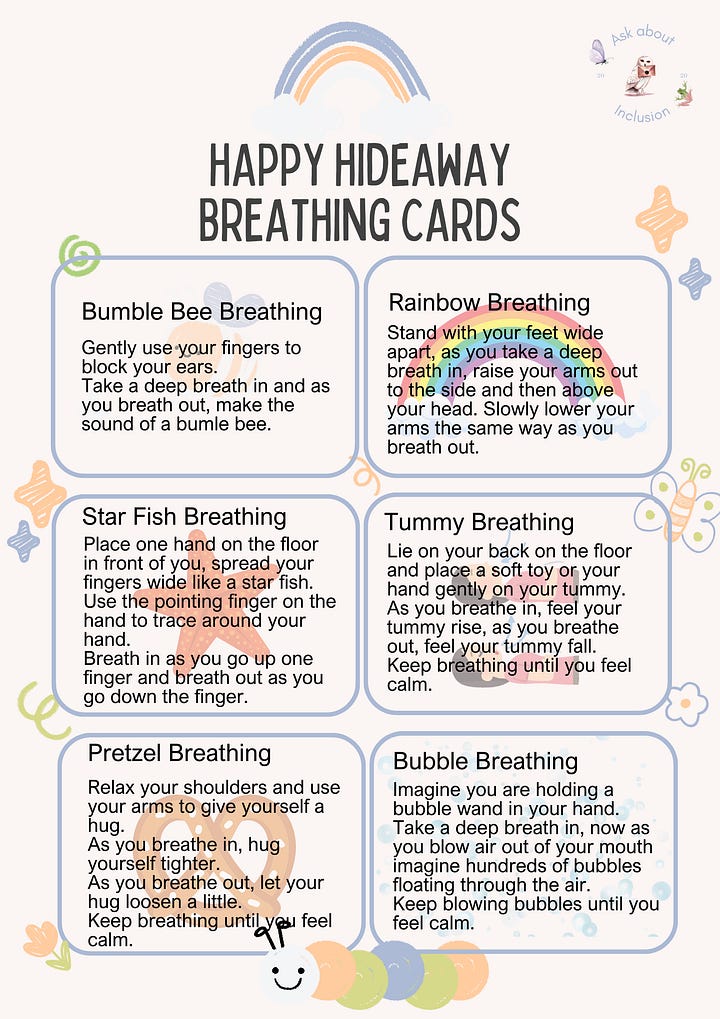
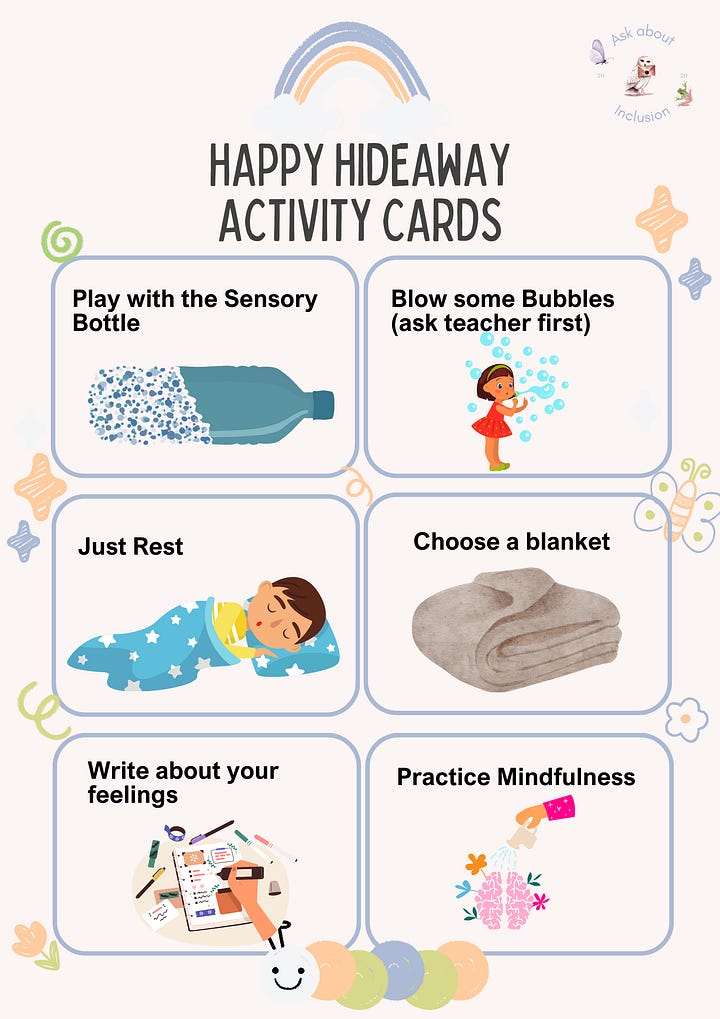
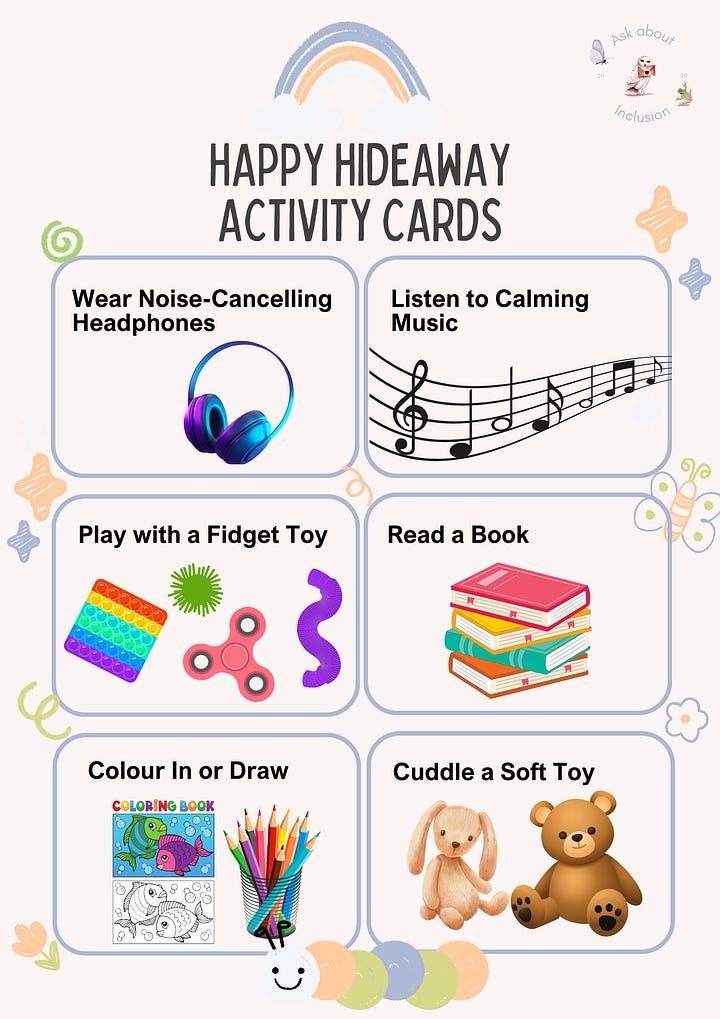
Have a wonderful week everyone, and thanks for sharing.



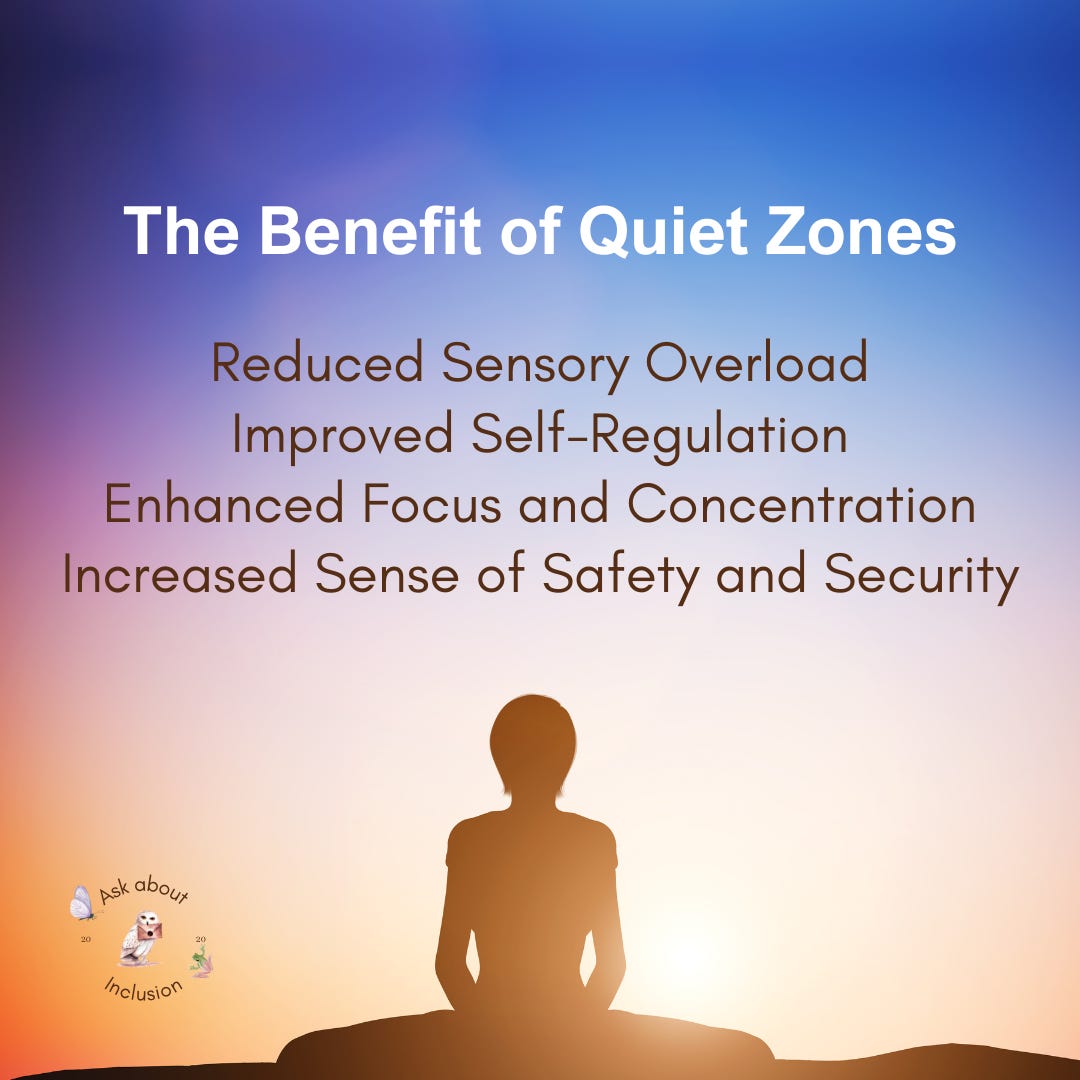
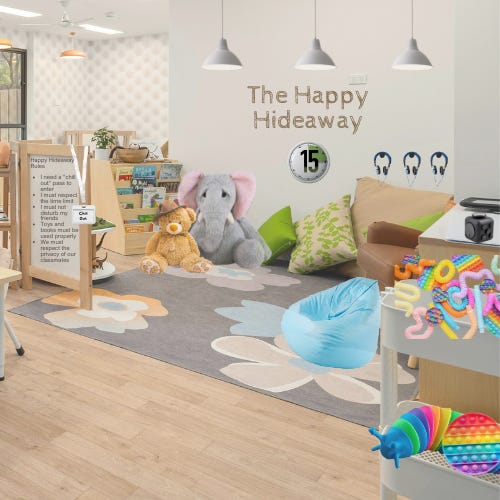
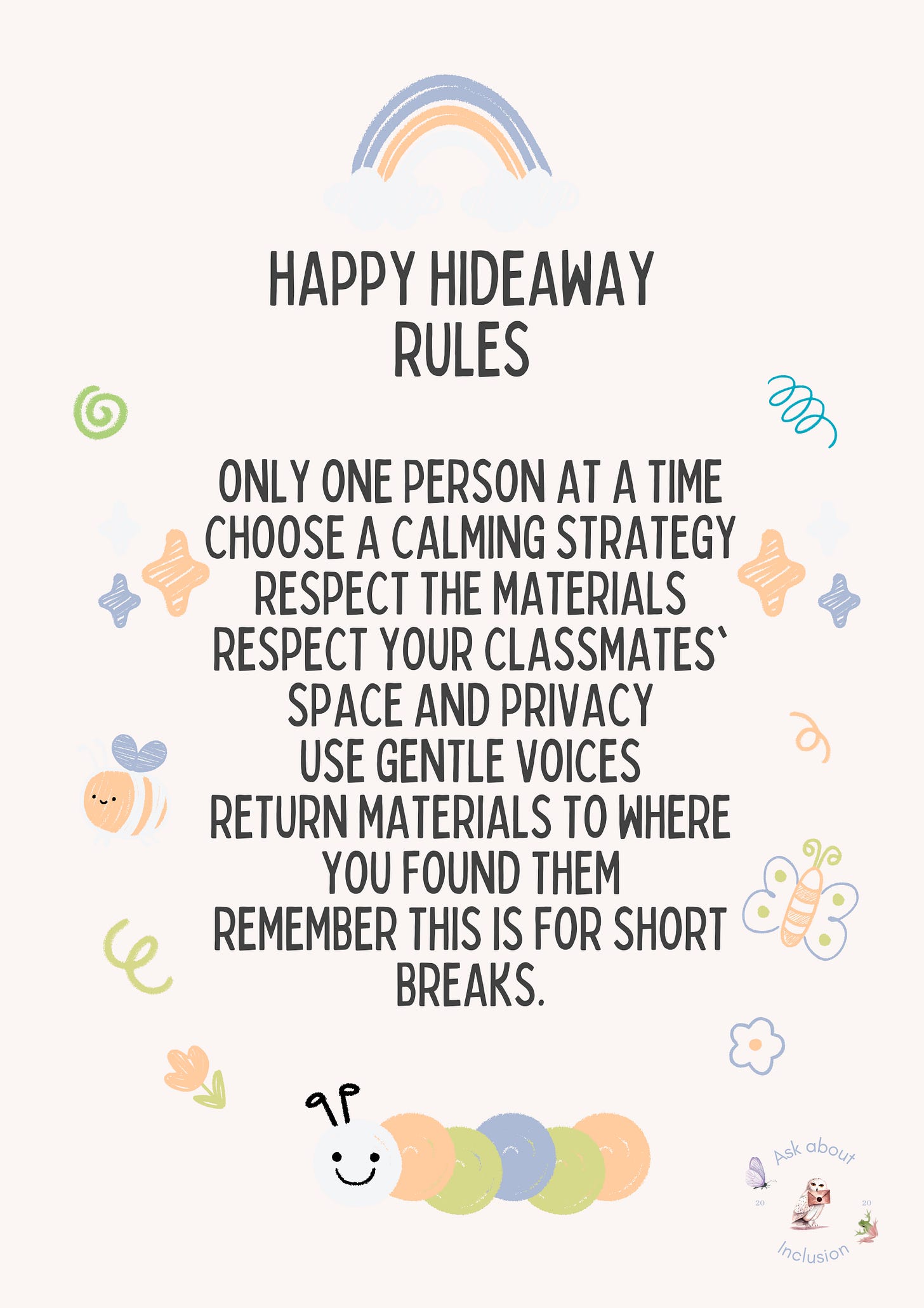
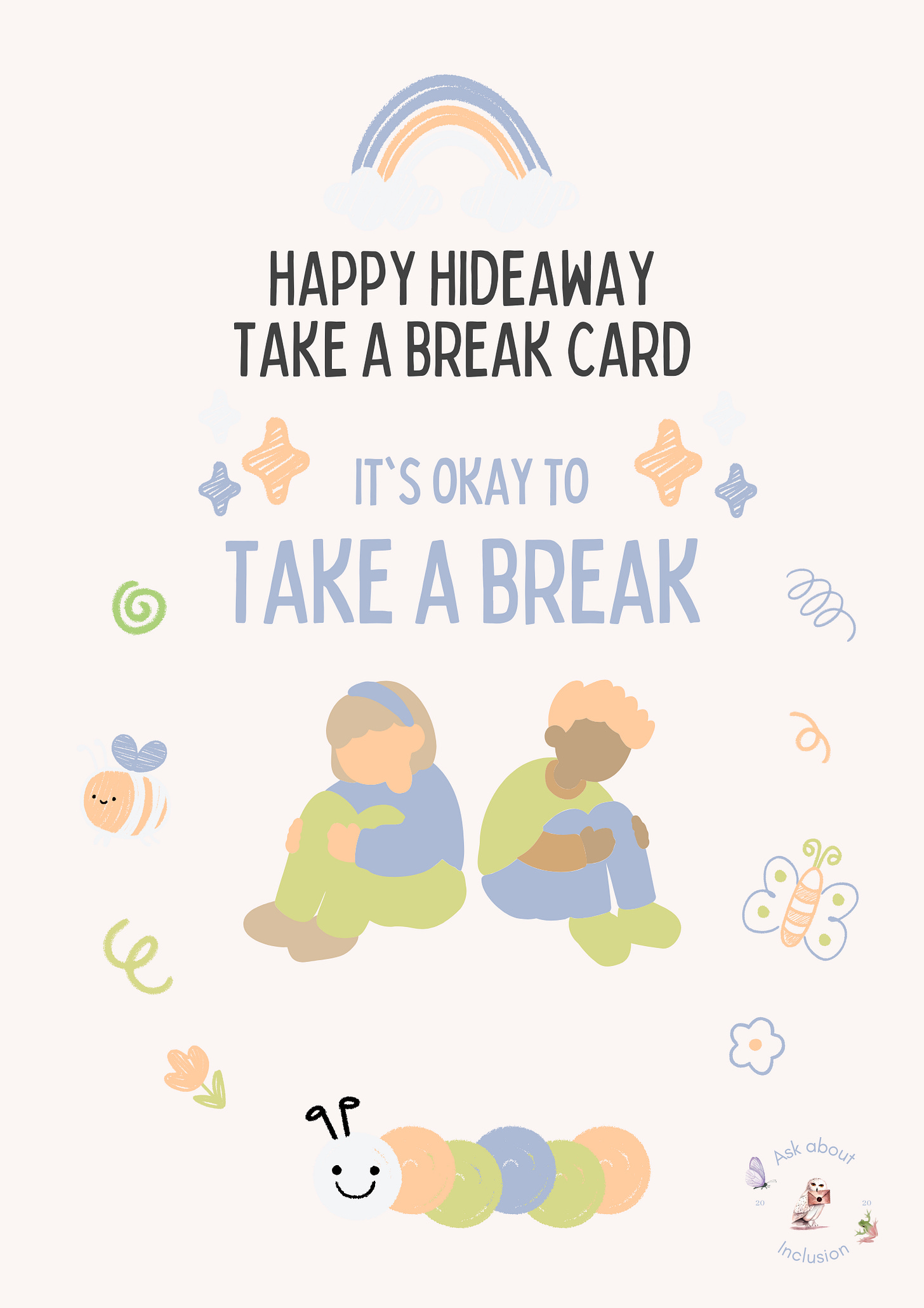
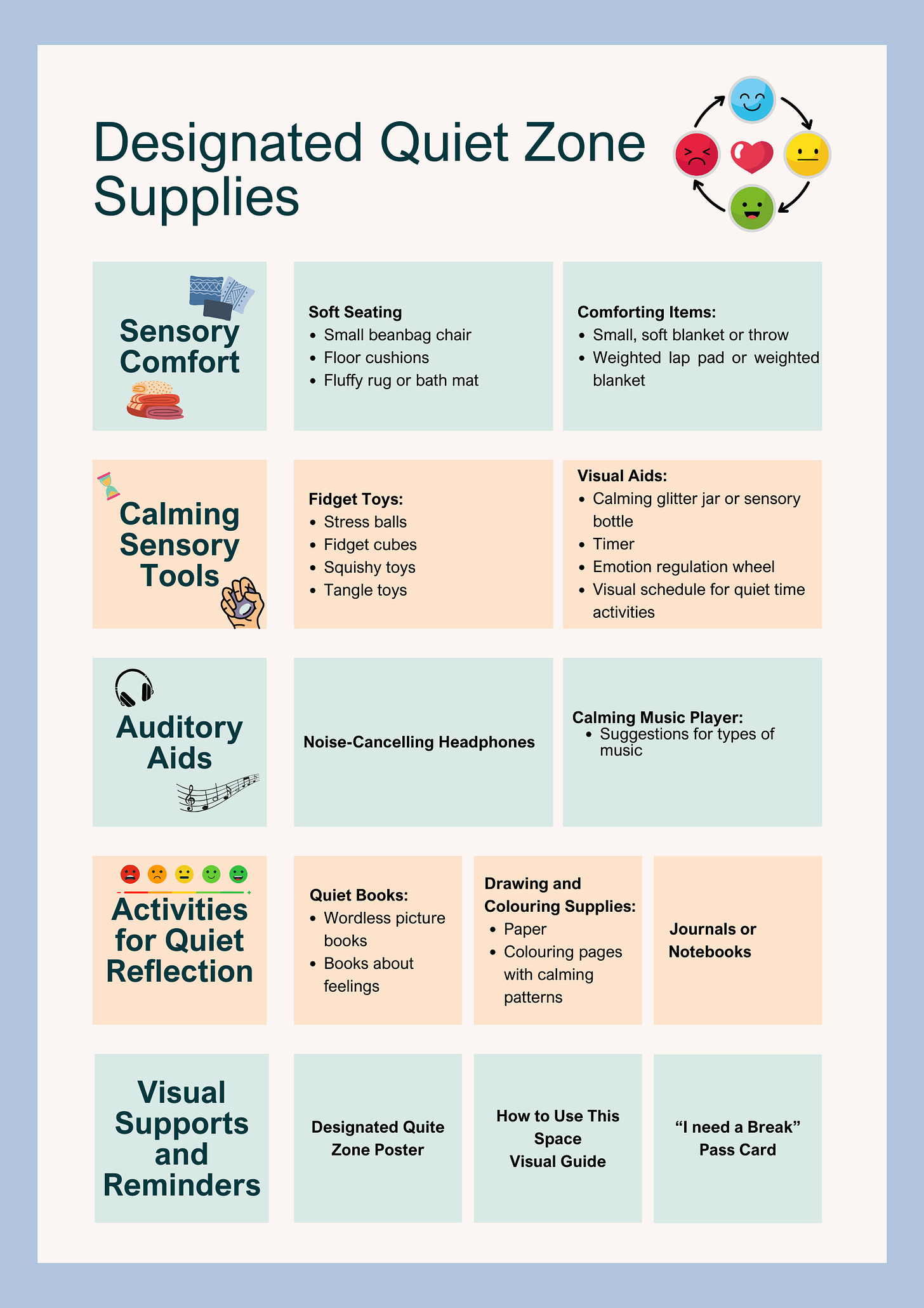
I love how this resonates with adults too! I focus on neuroinclusion and building inclusive workplaces, and lean into many of the same tools. Great post!